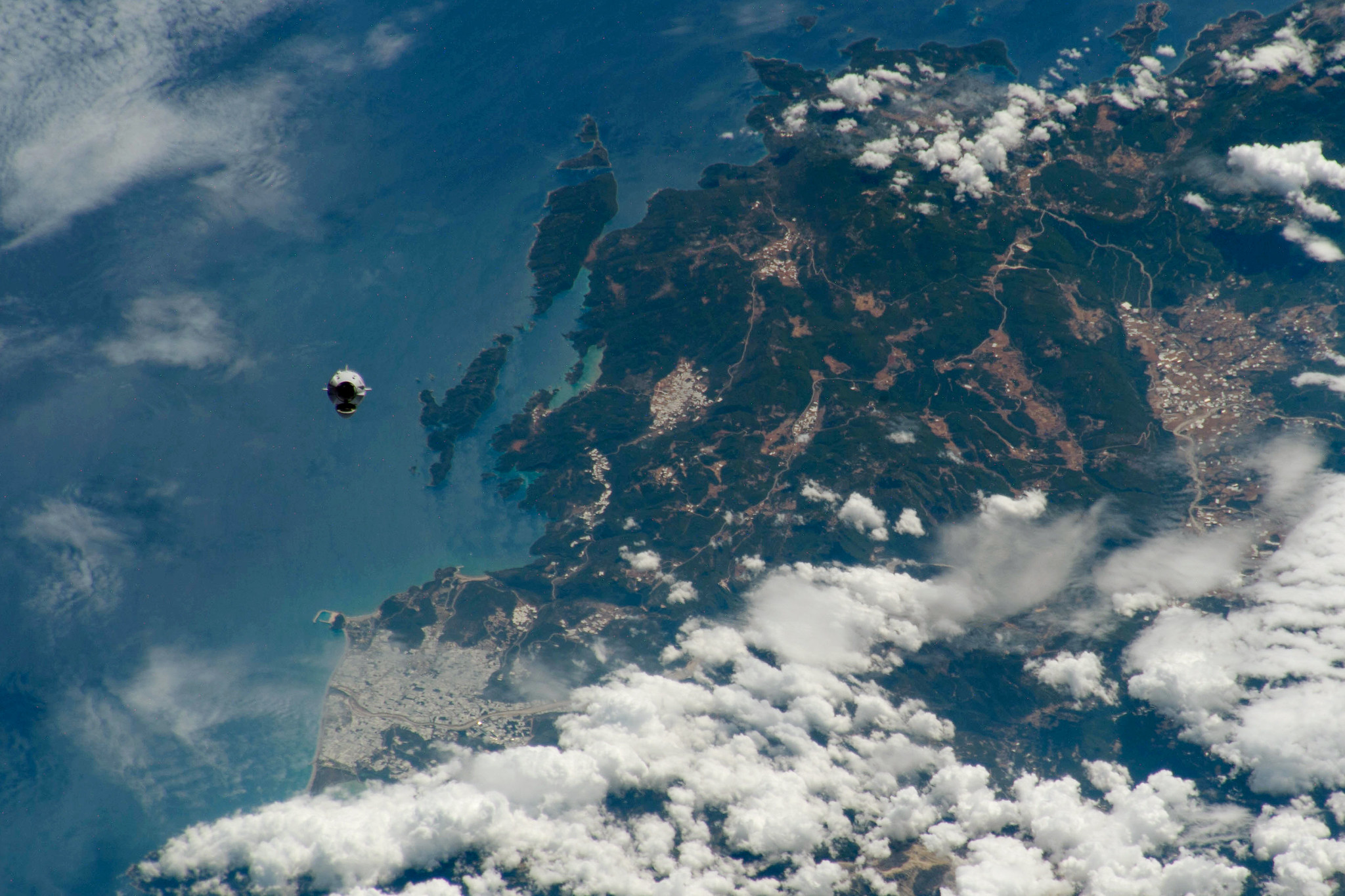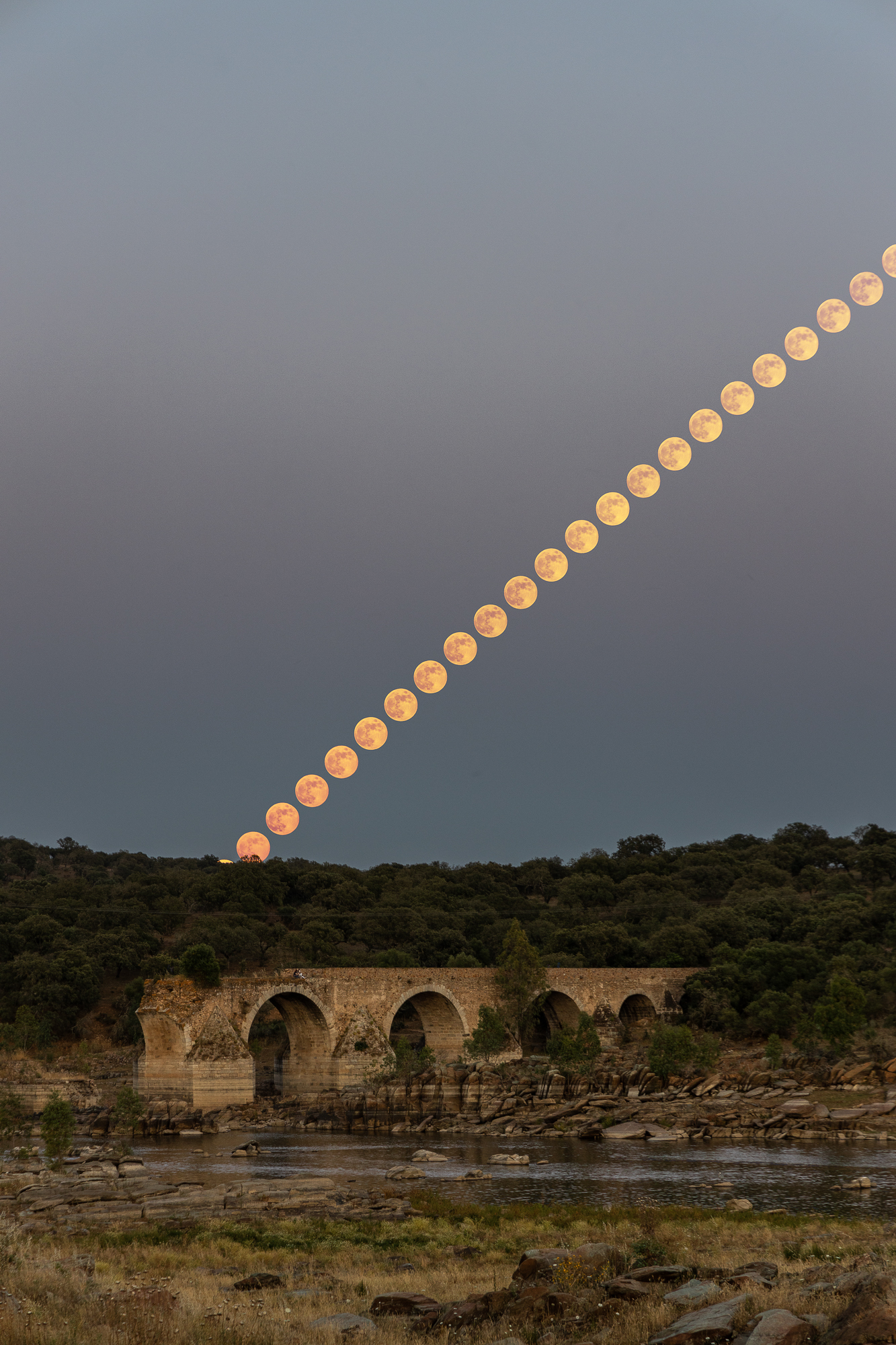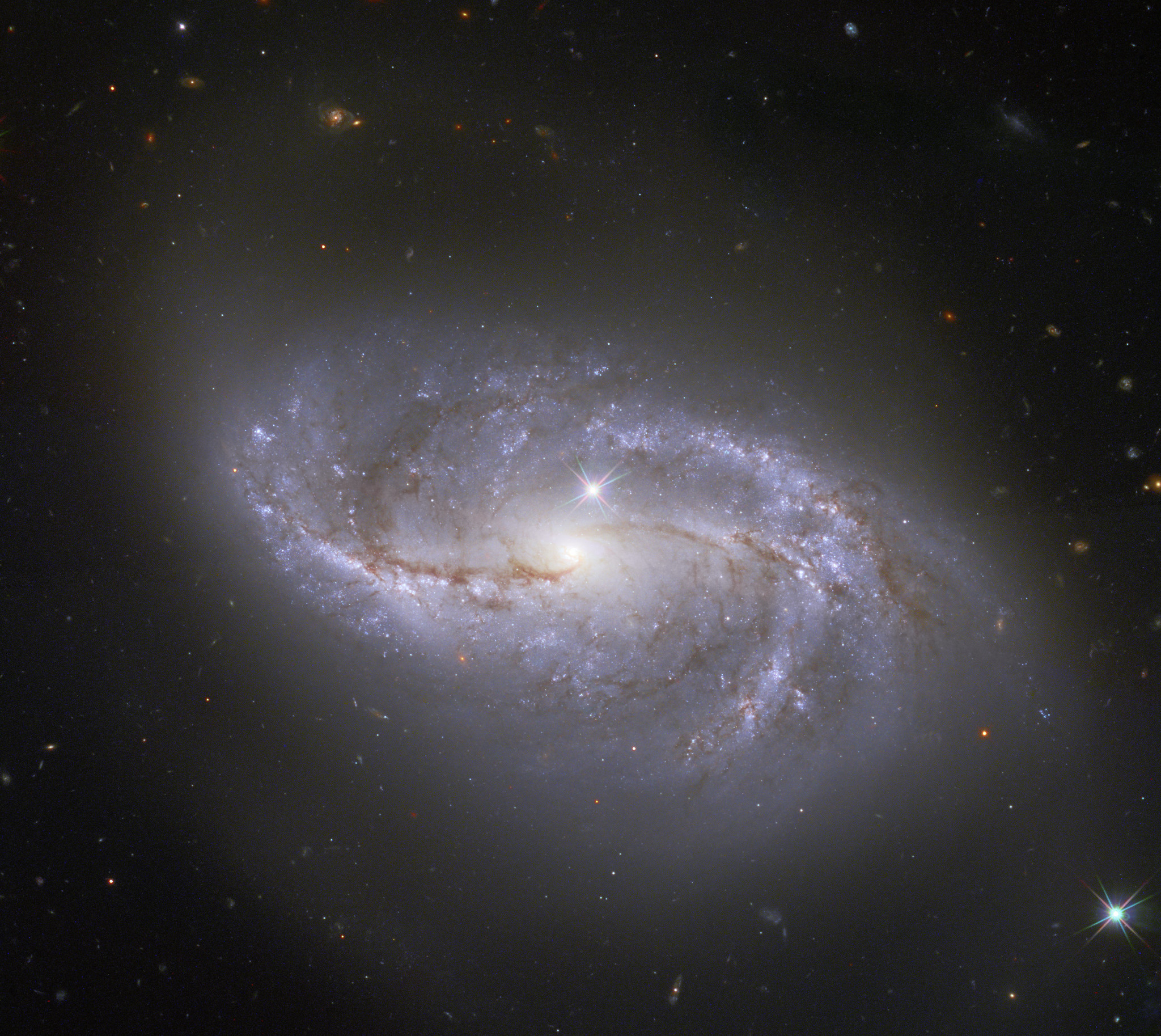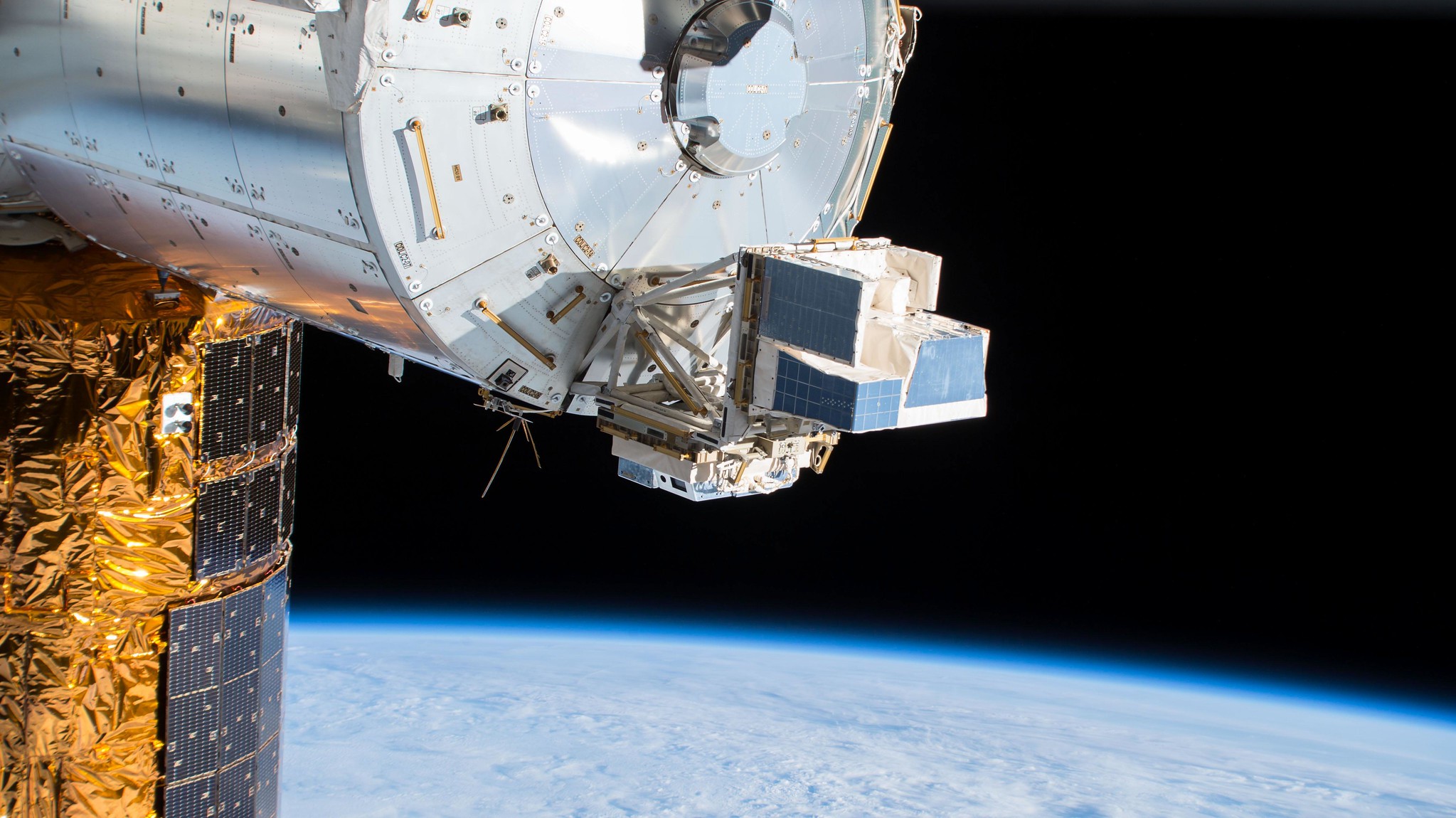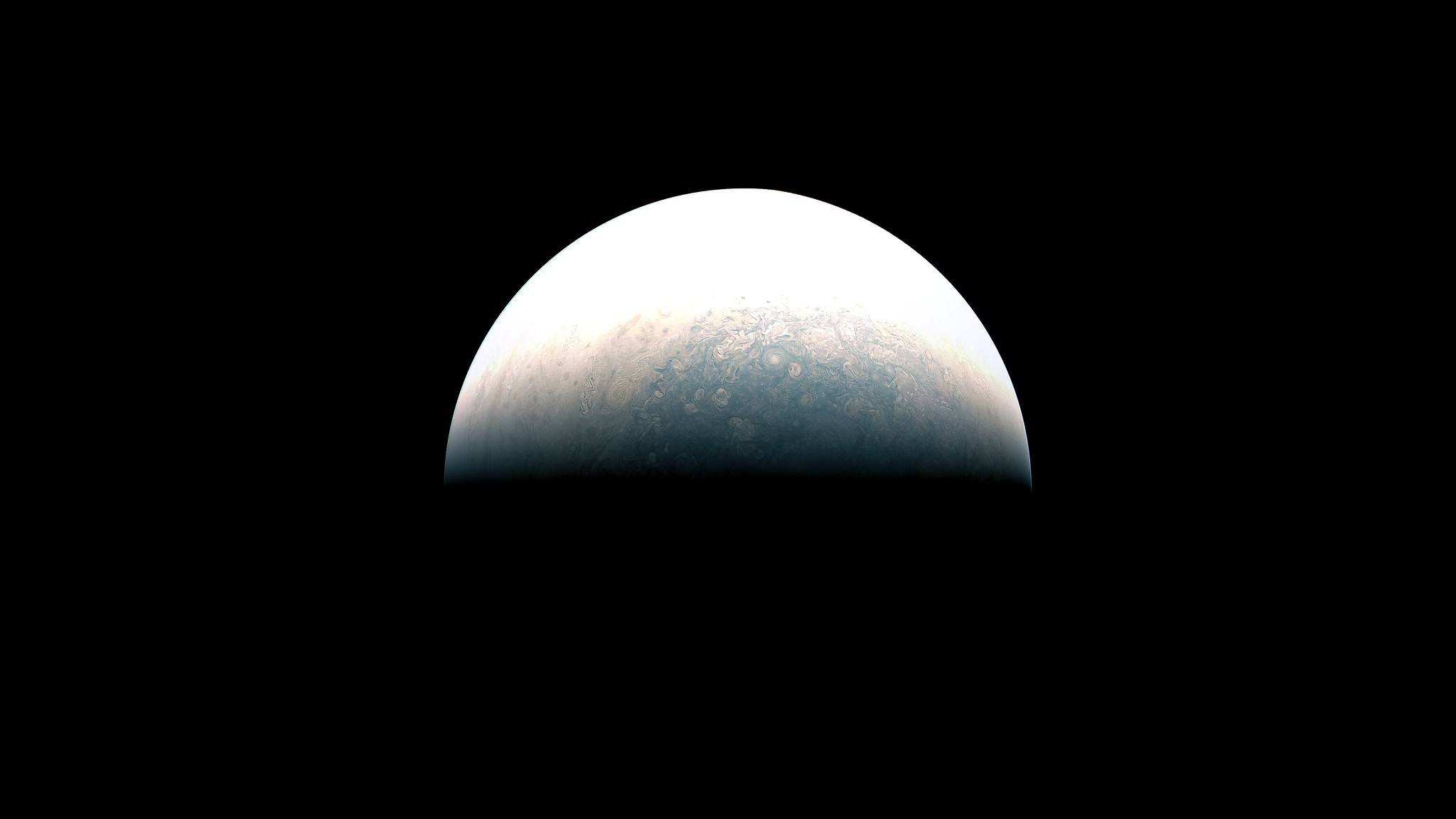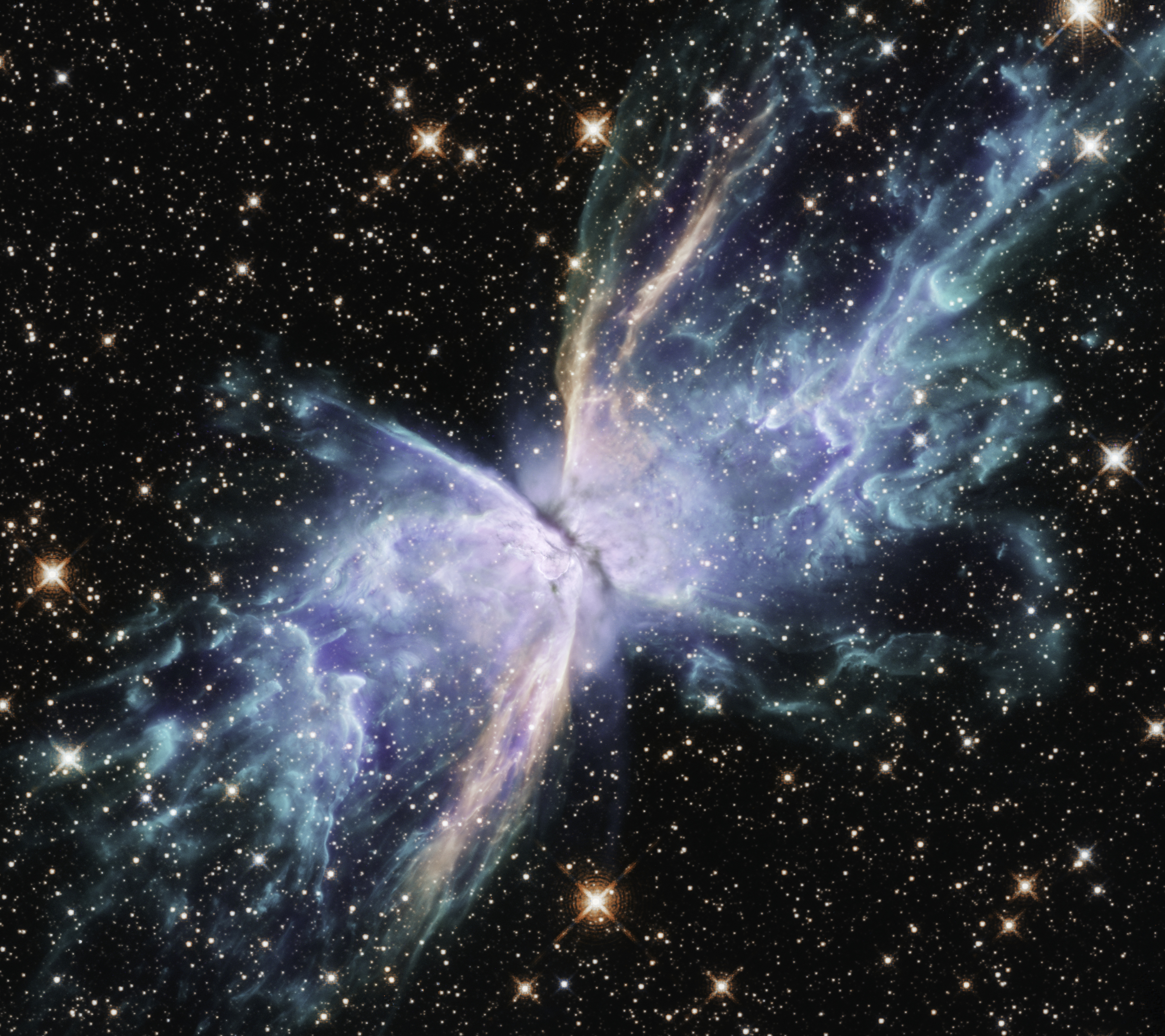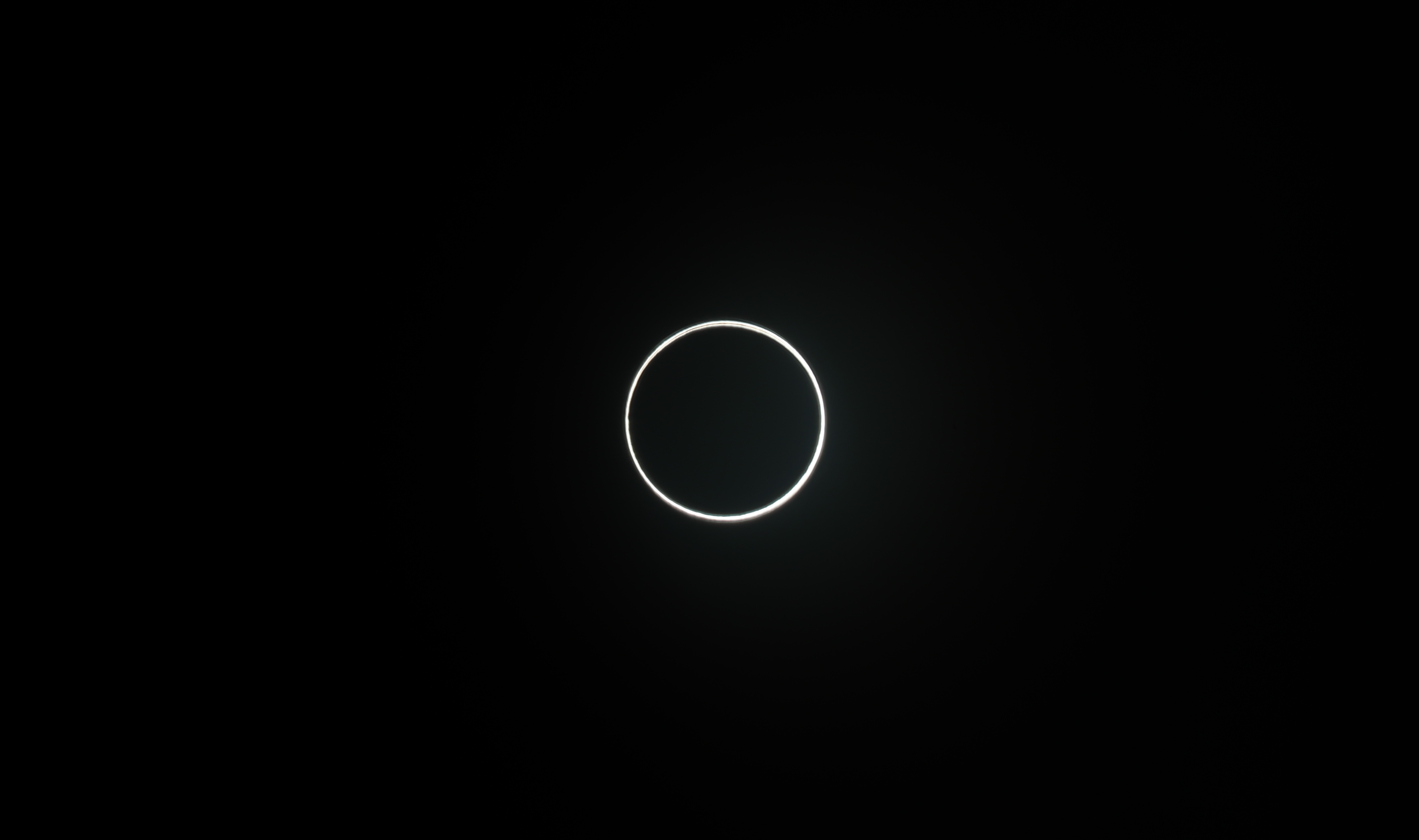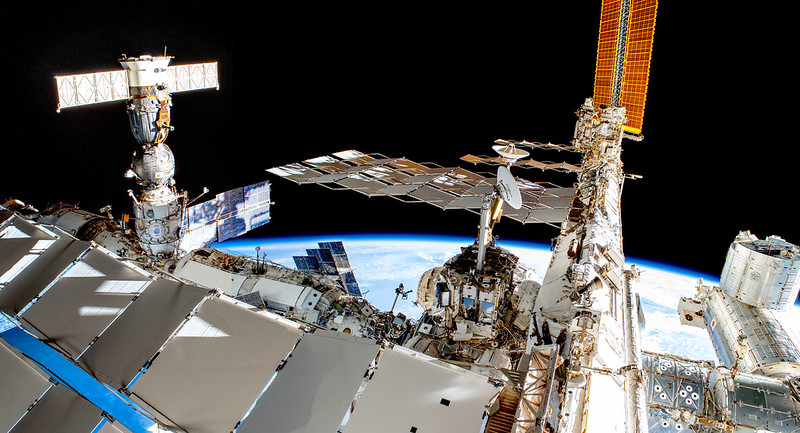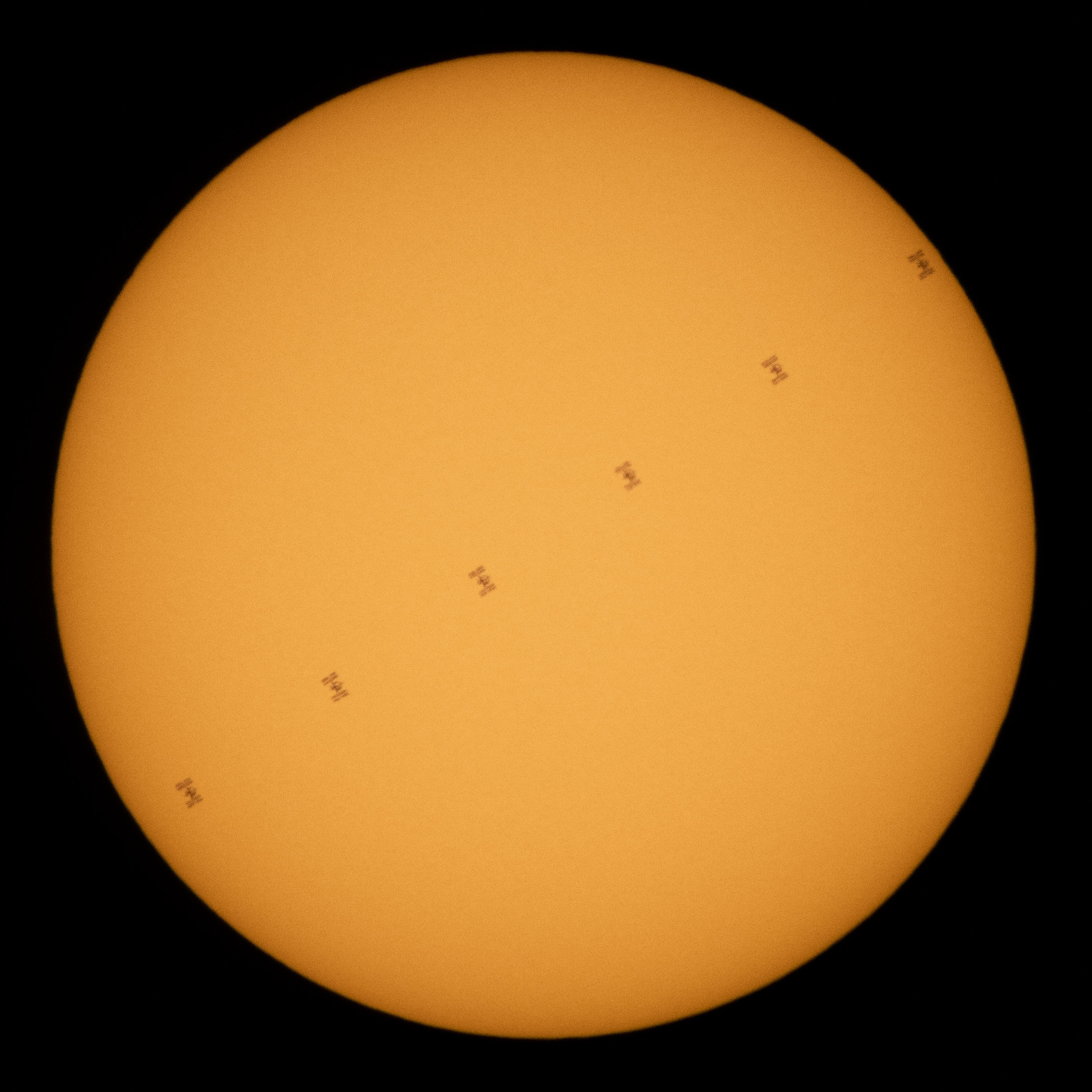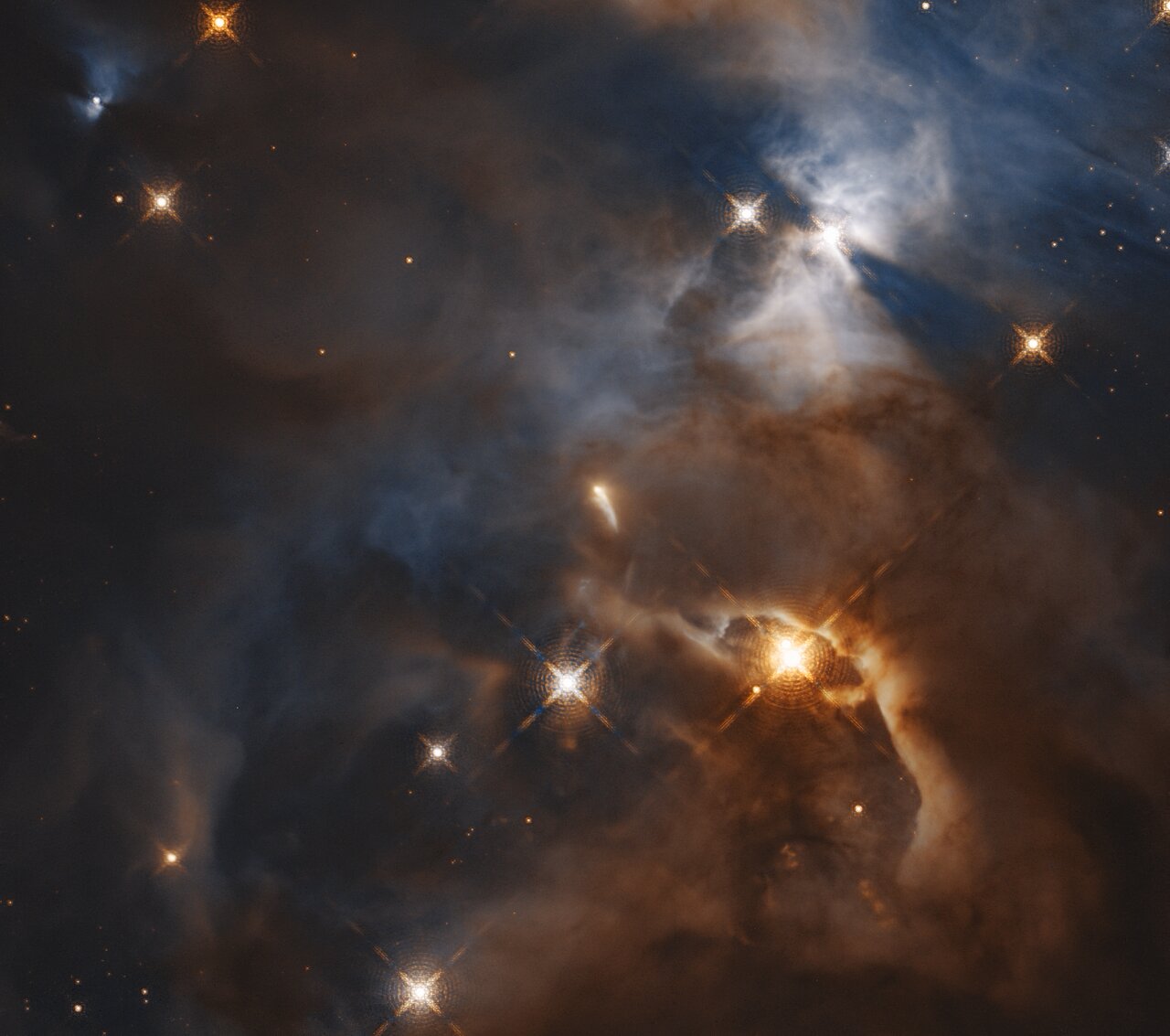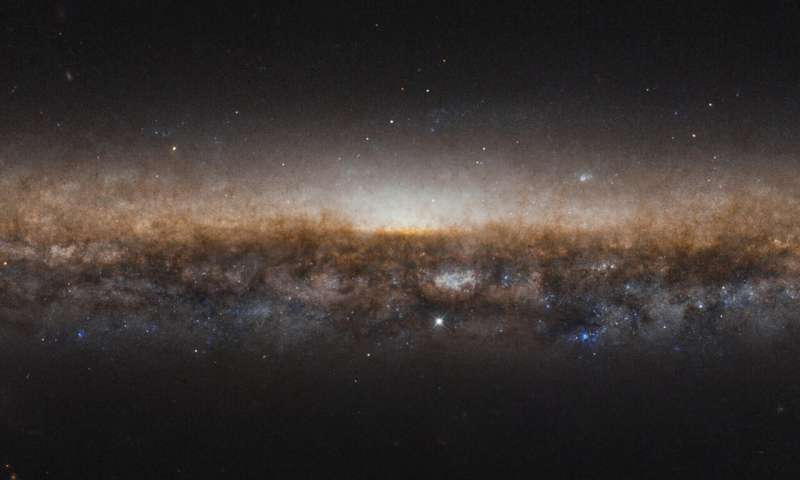Image of the Day 2020 Archive
June 2020
SpaceX makes history
Monday, June 1, 2020: A false-color, infrared exposure shows SpaceX's Falcon 9 rocket and first Crew Dragon spacecraft with astronauts on board lifting off from NASA's historic Launch Complex 39A at Kennedy Space Center in Florida. The historic launch on Saturday (May 30) was the first commercial flight to orbit and the first time NASA astronauts launched from the United States in nearly a decade. NASA astronauts Bob Behnken and Doug Hurley safely arrived at the International Space Station Sunday morning. — Hanneke Weitering
Crew Dragon approaches the space station
Tuesday, June 2, 2020: SpaceX's Crew Dragon spacecraft approaches the International Space Station with NASA astronauts Bob Behnken and Doug Hurley on board in this photo captured by an astronaut inside the orbiting lab on Sunday (May 31). In the foreground of the image is the Japan Aerospace Exploration Agency's (JAXA) robotic arm, which is attached to Japan's Kibo laboratory module. The Crew Dragon spacecraft docked at the station’s Harmony port on Sunday at 10:16 a.m. EDT (1416 GMT), while both spacecraft were flying about 262 miles (422 kilometers) above the northern border of China and Mongolia. — Hanneke Weitering
SpaceX's Falcon 9 returns to Florida
Wednesday, June 3, 2020: The SpaceX Falcon 9 rocket booster that launched two NASA astronauts to the International Space Station this weekend returns to shore on the company's drone ship, called "Of Course I Still Love You." After launching the Crew Dragon capsule from NASA's Kennedy Space Center in Florida, the rocket stuck an upright landing on the drone ship, which was stationed a few hundred miles off the Florida coast. It arrived in Florida's Port Canaveral on Tuesday (June 2). — Hanneke Weitering
Star cluster 'snowflakes'
Thursday, June 4, 2020: Sparkling stars shine like cosmic snowflakes in this image from the Hubble Space Telescope, which shows the globular cluster NGC 6441 13,000 light-years from the center of our Milky Way galaxy. While hard to count, together the stars in this cluster would weigh 1.6 million times the mas of our sun. This image was released by the European Space Agency's Hubble science team on June 1. — Tariq Malik
Orange airglow over La Silla
Friday, June 5, 2020: The starry night sky is ablaze with orange airglow in this stunning, fulldome view of the La Silla Observatory in Chile, captured by astrophotographer Guillaume Doyen. This soft, orange luminescence is the result of solar particles interacting with Earth's atmosphere, causing the air to emit visible light.
"Airglow on this night was especially intense, with the strong emissions of orange and red light rippling across the sky visible with the naked eye, even after the sun had set," officials with the European Southern Observatory (ESO), which operates telescopes at La Silla, said in an image description. ESO's TRAPPIST-South telescope, which famously discovered the TRAPPIST-1 system of Earth-size exoplanets, is visible in the foreground of the image. — Hanneke Weitering
Crew Dragon spotted over Turkey
Monday, June 8, 2020: SpaceX's Crew Dragon spacecraft approaches the International Space Station with NASA astronauts Bob Behnken and Doug Hurley in this photo captured by an astronaut on board the orbiting lab on May 31, shortly before the spacecraft docked with the station. When the image was taken, the space station was orbiting above southwestern Turkey, including the coastal city of Demre, seen here as a grey area below the Crew Dragon. — Hanneke Weitering
Breaking space news, the latest updates on rocket launches, skywatching events and more!
Eclipsed 'Strawberry Moon' rises over Portugal
Tuesday, June 9, 2020: The Full Strawberry Moon rises over Ponte da Ajuda, a historic bridge near the border between Portugal and Spain, during the penumbral lunar eclipse on Friday (June 5). Astrophotographer Sérgio Conceição created this composite image of the rising moon from Elvas, Portugal, at the end of the eclipse. During this subtle lunar eclipse, the moon passed through the faint outer part of Earth's shadow, known as the penumbra, causing its surface to appear slightly tea-stained. "It can be seen that the moon was born with a more intense reddish pink color and started to whiten as it rose," Conceição told Space.com in an email. — Hanneke Weitering
Waning "Strawberry Moon" seen from space
Wednesday, June 10, 2020: The waning gibbous moon rises over Earth's blue horizon in this photo taken by an astronaut at the International Space Station on Sunday (June 7), two days after the Full Strawberry Moon passed through Earth's outer shadow, causing a subtle penumbral lunar eclipse. An Expedition 63 crewmember captured this view as the space station was orbiting above the Atlantic Ocean, off the coast of the African nation of Angola. — Hanneke Weitering
Webb telescope passes critical test
Thursday, June 11, 2020: NASA's James Webb Space Telescope just passed another key milestone ahead of its planned launch in 2021. In a recent test at a Northrop Grumman facility in Redondo Beach, California, the new observatory deployed and extended its Deployable Tower Assembly. This component of the telescope separates its iconic gold mirrors from the spacecraft's scientific instruments and propulsion systems. Having that space there will allow the telescope's cooling systems to bring its instruments "down to staggeringly cold temperatures required to perform optimal science," NASA said in a statement. — Hanneke Weitering
A stellar photobomb
Friday, June 12, 2020: The spiral galaxy NGC 2608 gets "photobombed" by two stars inside our Milky Way galaxy in this new image from the Hubble Space Telescope. Bright Milky Way stars in the foreground of Hubble's deep-space images often appear as lens flares, like the one visible in the bottom right corner of this image. Another is just above the center of NGC 2608. All the other specks of light that pepper the black abyss around the galaxy are not stars, but thousands of other distant galaxies. "NGC 2608 is just one among an uncountable number of kindred structures," Hubble scientists said in a statement. — Hanneke Weitering
Auroras and airglow over Earth
Monday, June 15, 2020: Green and purple auroras shimmy above the orange airglow of Earth's upper atmosphere in this colorful view from the International Space Station. NASA astronaut Chris Cassidy captured this image while the space station was orbiting above the Indian Ocean, between the continents of Australia and Antarctica, on June 7. — Hanneke Weitering
A stargazer under the Milky Way
Tuesday, June 16, 2020: Under a sea of stars, a skywatcher points to the beautiful arch of the Milky Way Galaxy in this 360-degree panorama from the Paranal Observatory in Chile. The stargazer in this shot is European Southern Observatory (ESO) photo ambassador Babak Tafreshi, and on the left are the telescopes that make up ESO's Very Large Telescope array, which consists of four boxy Unit Telescopes and four smaller auxiliary telescopes. The image was recently featured as ESO's Picture of the Week. — Hanneke Weitering
Space station's "storm hunter" turns two
Wednesday, June 17, 2020: The Atmosphere-Space Interactions Monitor (ASIM), which monitors Earth's thunderstorms from the International Space Station, celebrated its second anniversary this week. ASIM, which is mounted outside the European module of the space station, launched in April 2018 and began science operations on June 14, 2018. The payload looks for electrical discharges in Earth's upper atmosphere — known as red sprites, blue jets and elves — which appear as bright flashes of lighting that extend upward and into space. Because these events happen above thunderstorms, they are difficult to study from the ground, but airplane pilots have reported seeing them during flight. — Hanneke Weitering
Juno spacecraft swings by Jupiter
Thursday, June 18, 2020: This stunning image of Jupiter was taken by NASA's Juno spacecraft as it performed its perijove 27 flyby of the gas giant. Perijove is the spot in a probe's (like Juno) orbit of Jupiter closest to the planet's center. Citizen scientist Kevin Gill processed the image using data Juno collected during the flyby which took place on June 2, 2020. — Chelsea Gohd
The stunning Butterfly Nebula
Friday, June 19, 2020: The Butterfly Nebula, also known as NGC 6302, is depicted here in a brilliant image taken by the NASA/ESA Hubble Space Telescope. This nebula lies about 3,800 light-years away from planet Earth in the constellation Scorpius. The striking butterfly shape of the nebula stretches out an incredible distance, over two light-years. — Chelsea Gohd
Spotting a "ring of fire"
Monday, June 22, 2020: With annular solar eclipses, the moon doesn't cover all of the sun. Instead, it leaves a brilliant "ring of fire" visible around its edge. The 2020 annular solar eclipse occurred on June 21, 2020. In this image, you can see the eclipse as it appeared on June 21, 2020 from Xiamen, Fujian Province of China.
Stitching together a space station
Tuesday, June 23, 2020: Author, journalist and researcher Lee Brandon-Cremer created this panorama of the International Space Station using three images taken from aboard the station by European Space Agency astronaut Luca Parmitano.
"For every spacewalk there are thousands of images taken. Sometimes a few images jump out at me,” Brandon-Cremer said in an ESA statement. “One day I realised I could stitch these images together to expand the scene and show what the astronaut sees in a broader sense.”
Cloud art from space
Wednesday, June 24, 2020: Veteran NASA astronaut Doug Hurley, who launched to the International Space Station aboard SpaceX's Crew Dragon craft as part of the company's Demo-2 mission on May 30, snapped this incredible photo from the space station. Hurley's view from space shows striking cloud formations over the South Pacific Ocean. "Cloud art in the South Pacific," Hurley wrote alongside the image which he shared on Twitter.
A space station solar transit
Thursday, June 25, 2020: This composite image shows the International Space Station as it transits in front of the sun. Made up of six different frames taken from Fredericksburg, Virginia, this image shows the space station moving at approximately 5 miles per second on June 24, 2020. Five astronauts are currently onboard the space station, including Expedition 63 NASA astronauts Chris Cassidy, Douglas Hurley and Robert Behnken and Roscosmos cosmonauts Anatoly Ivanishin and Ivan Vagner.
A flapping space bat
Friday, June 26, 2020: In this image taken by the Hubble Space Telescope and released June 25, 2020, you can see the star HBC 672, nicknamed "Bat Shadow." The strange feature got its name because it looks like a large, shadowy wing. But its name has even more meaning as, with new Hubble observations from a team led by Klaus Pontoppidan, an astronomer at the Space Telescope Science Institute (STScI) in Baltimore, Maryland, it appears as if the "bat wings" are "flapping."
The knife edge galaxy
June 29, 2020: This new image, taken by the NASA/ESA Hubble Space Telescope, shows the incredible stretch of the galaxy NGC 5907, also known as the Knife Edge galaxy. This is a spiral galaxy, much like our home galaxy, the Milky Way. Though, you can’t see the galaxy’s brilliant spiral shape in this image as this image was taken facing the galaxy’s edge.
A stunning Dragon view
June 30, 2020: NASA astronaut Chris Cassidy snapped this photo of SpaceX's Crew Dragon vehicle docked with the International Space Station and with Earth's curvature in the background during a spacewalk with Bob Behnken on Friday, June 26, 2020. During this spacewalk, the pair of astronauts swapped out aging nickel-hydrogen batteries with brand new lithium-ion batteries on the space station.
Can't find the date you're looking for? It may have been a weekend or holiday, when we don't normally update our Image of the Day.
Click 'NEXT PAGE' below for July >

Space.com is the premier source of space exploration, innovation and astronomy news, chronicling (and celebrating) humanity's ongoing expansion across the final frontier. Originally founded in 1999, Space.com is, and always has been, the passion of writers and editors who are space fans and also trained journalists. Our current news team consists of Editor-in-Chief Tariq Malik; Editor Hanneke Weitering, Senior Space Writer Mike Wall; Senior Writer Meghan Bartels; Senior Writer Chelsea Gohd, Senior Writer Tereza Pultarova and Staff Writer Alexander Cox, focusing on e-commerce. Senior Producer Steve Spaleta oversees our space videos, with Diana Whitcroft as our Social Media Editor.





